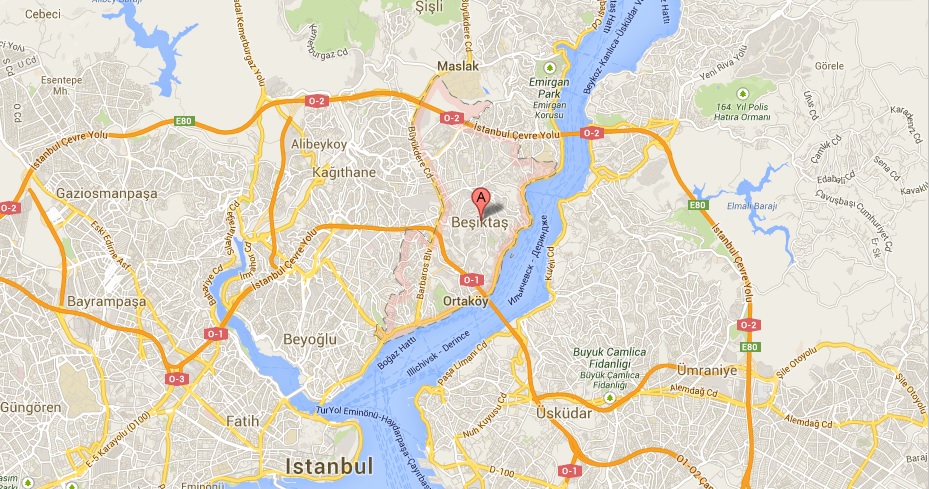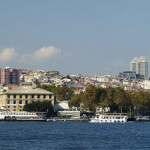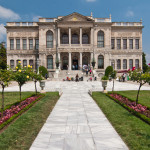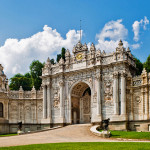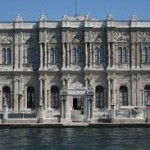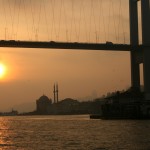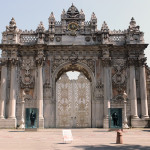ISTANBUL’S MARITIME DISTRICT
Located on the Rumeli side of the Bosphorus Strait, the Istanbul district of Beşiktaş borders the boroughs of Şişli and Kağıthane to the west, Beyoğlu to the southwest and Sarıyer to the north. With an area of 11km², it has a coastline of 8875 metres long and a population of 186,067 in 2013.
Beşiktaş is thought to have received its name as a corruption of ‘beş taş’ or ‘beşik taş’, the Turkish for ‘five stones’, referring to the stone pillars used for mooring ships during the time of the famous 16th-century Ottoman admiral, Barbarossa Hayreddin. It is also thought that the name derives from the words for a haven for ships, ‘gemi beşiği’. The town centre and market is still even today referred to as the ‘village centre’ by some residents giving a clue to its origins.
During the Byzantine era Beşiktaş was a place where religious institutions settled away from the city centre with the development of the area only really beginning during the Ottoman era when naval captains settled there in the 17th century. Mosques and fountains were built and villages began to appear on the outskirts of the valley, with a resulting revival in marine transportation. The caiques that had previously only provided transport to Üsküdar on the opposite shoreline also began serving such areas as Beşiktaş and the Bosphorus.
During the first half of the 19th century new settlements developed around the Maçka Barracks and with the construction of the Dolmabahçe (1853), Çırağan (1874) and Yıldız (1880) palaces – Dolmabahçe and its environs became the new hub of governance. Atatürk’s mother, Zübeyde Hanım, is known to have lived in her son’s house at no.76 on Spor Road (currently housing the Mental Health Dispensary) in Beşiktaş’ Akaretler district in the period before the Turkish War of Independence.
After the proclamation of the Turkish Republic the importance of Beşiktaş waned although Atatürk continued to stay at the Dolmabahçe Palace during his visits to Istanbul. Beşiktaş was given district in 1930.
Historical Structures and important spots.
Abbasağa Mosque
This is an Ottoman mosque in the Abbasağa neighborhood, which owes its name to the mosque. It was built in 1655 on the order of Abbas Agha, the chief harem eunuch, and was restored during the reign of Sultan Mahmut II. The Abbasağa mosque has stone walls and a wooden ceiling, and it also has a sultan’s lodge. A drinking fountain dating back to 1637 can also be seen next to the temple.
The Tomb of Barbarossa Hayreddin Pasha
The tomb of the famous admiral is located opposite Sinan Pasha Mosque. It was built by the most gifted Ottoman architect Sinan. The structure is octagonal, single-domed and has windows on the lower and upper sections. A green silk banner bearing the zulfikar symbol on it is draped over the symbolic coffin inside the tomb.
Bebek Mosque
Bebek Mosque, or Hümayûn-u Âbad Mosque as it is listed on formal records, is a historical mosque in the seaside neighborhood of Bebek. Bebek is one of the most popular areas in Istanbul with its numerous fancy cafes and restaurants.
The mosque is located right next to the port in Bebek Bay. It was built using cut stones by Mimar Kemalettin in 1913, on the site of a former mosque built on the order of Nevşehirli İbrahim Pasha. The temple is considered as an example of neo-classical architecture. The central dome is built on eight drums and is supported by four half domes on each side.
Beşiktaş JK İnönü Stadium
The stadium owes its name to one of the leading founders of the Turkish Republic, İsmet İnönü. The stadium lies between central Beşiktaş and Kabataş. It was renovated in 2004 and its capacity was increased to 32.806. It ranked fourth in 10 Stadiums with the Best View list, prepared by The Times. The first game in the stadium was between Beşiktaş JK and AIK Solna from Sweden on November 27th, 1947. The first goal in the stadium was scored in this match by Süleyman Seba, then a player in the team. Süleyman Seba later became one of the legendary presidents of the club and his name was given to one of the busiest streets in Beşiktaş. The stadium was recently demolished and a new Beşiktaş JK stadium complex is under construction. It is expect to be completed so they can welcome back their fans in 2015.
Esma Sultan Mansion
Dating back to 18th century, the mansion takes its name from the daughter of Abdülhamid I, Esma Sultan (1778-1848). When the mansion was given to her, Esma Sultan was just ten years old. The building had been known as Tırnakçı Mansion before it was associated with Esma Sultan. The mansion stayed in the possession of the Ottoman dynasty until 1915. It was seriously damaged by a fire in the 1920s and was used as a warehouse until 1975. Eventually, it was rebuilt by The Marmara Hotel chain in the 1990s.
Yıldız Palace
The palace was first built for Mihrişah Sultan, the mother of Sultan Selim III (1789-1807), but it gained its prominence while it was used as the main palace of the empire during the reign of Abdülhamid II (1876-1909). It is planned as a complex of palace buildings, kiosks, chalets, administrative buildings, security structures, service buildings and parks within a large green area covering the hillside starting from the Bosphorus leaning towards the northwest. This diverse layout differentiates it from other single-structure palaces such as Dolmabahçe.
The area used to be the hunting grounds for the sultans from the time of Suleyman the Magnificent on. While it isn’t clear whether these gardens overlapped with the existing park area, there used to be gardens called “Kazancıoğlu Garden” and “Civan Kapucıbaşı Garden” in the Yıldız Palace area before the reign of Ahmed 1 (1603-1617), who included these in the Imperial Gardens.
Many buildings were added to the complex as needs arose. Most of these structures are considered the best examples of their period and they contributed to the development and the significance of the surrounding areas.













